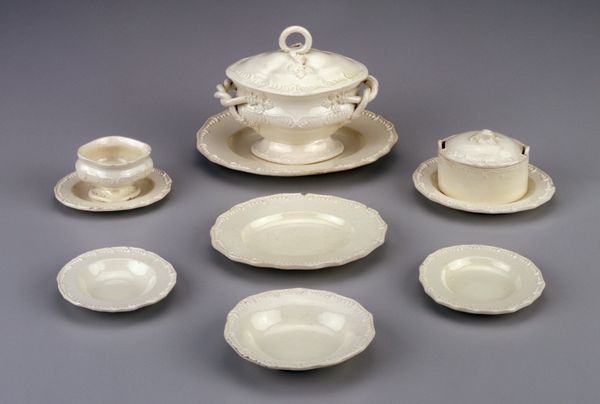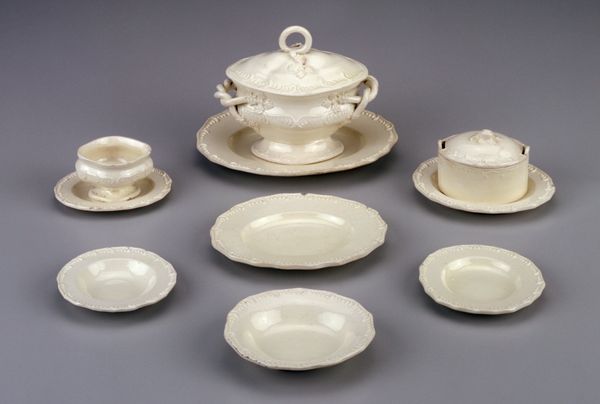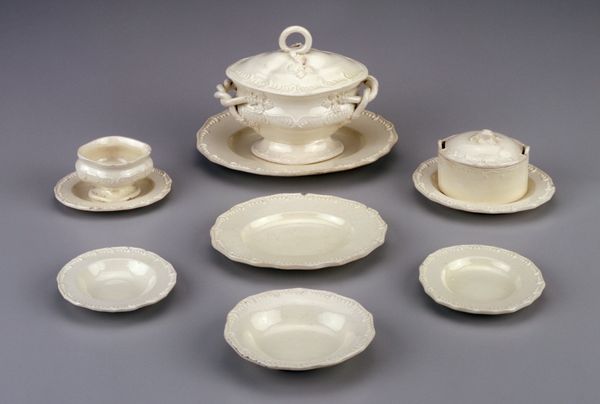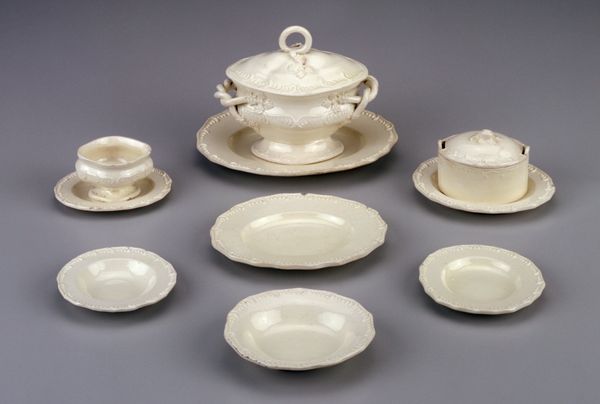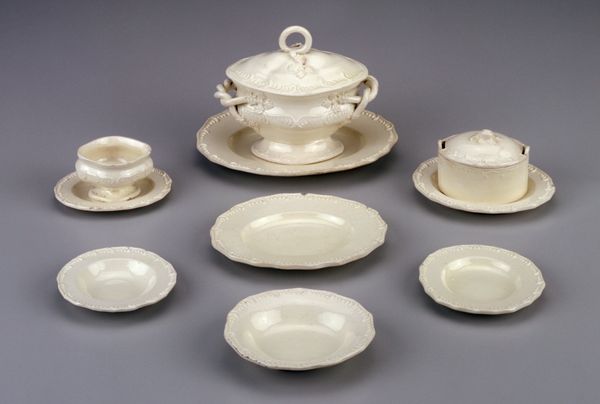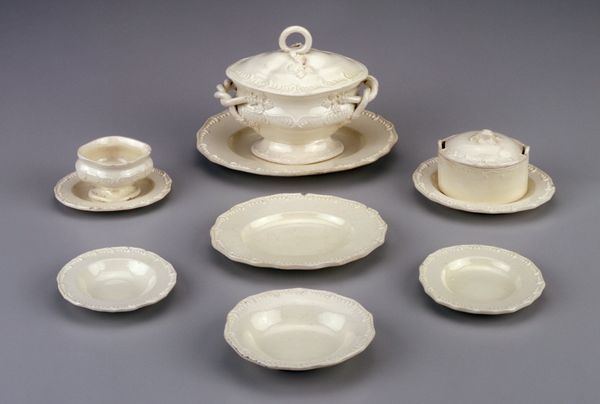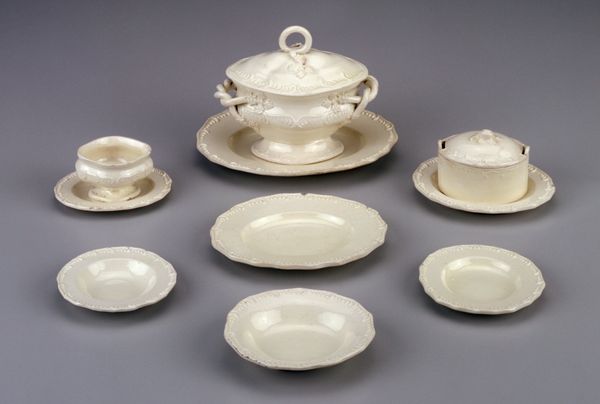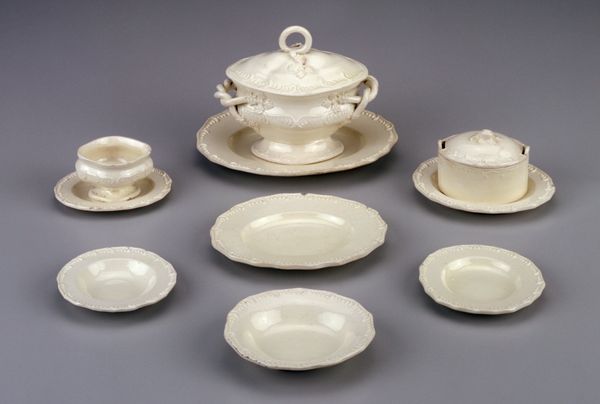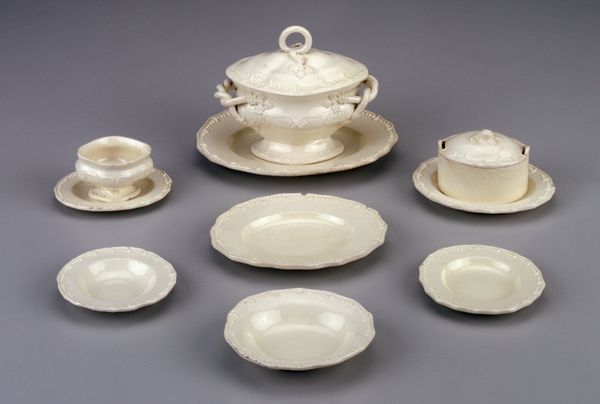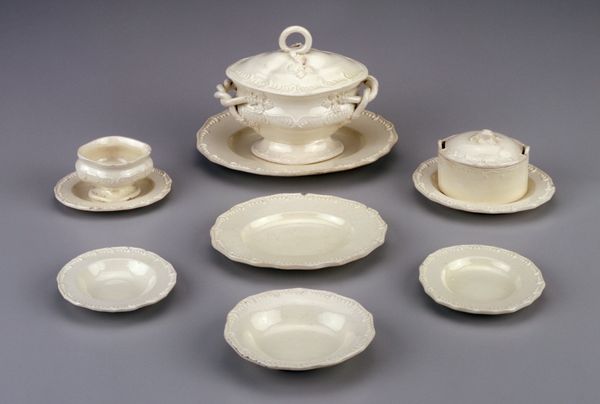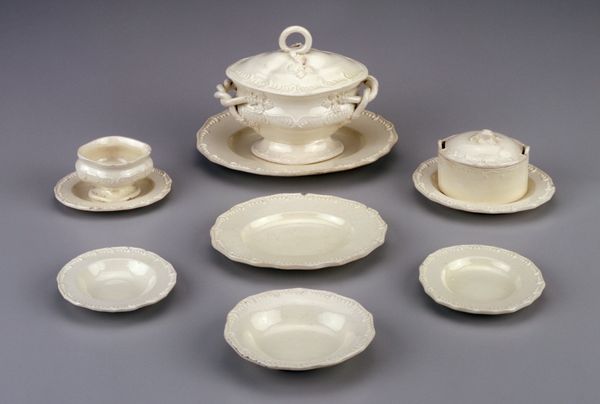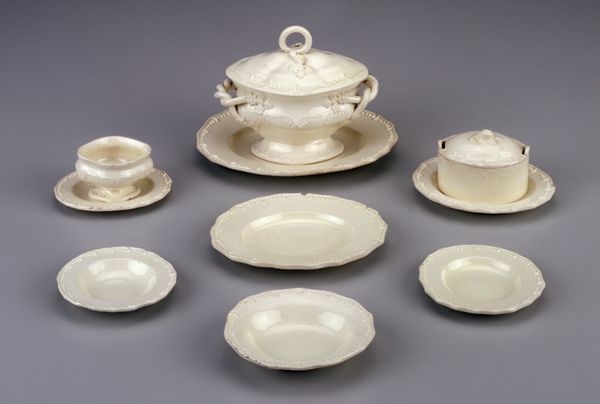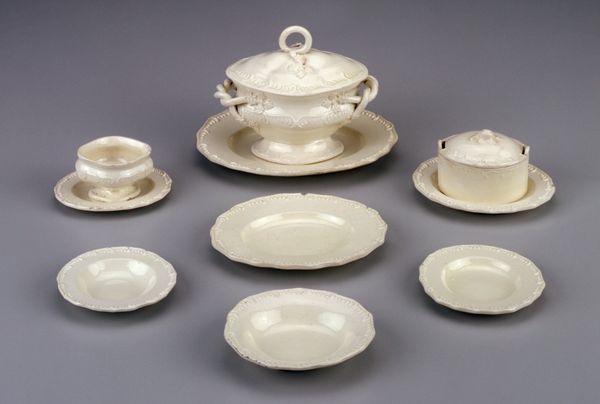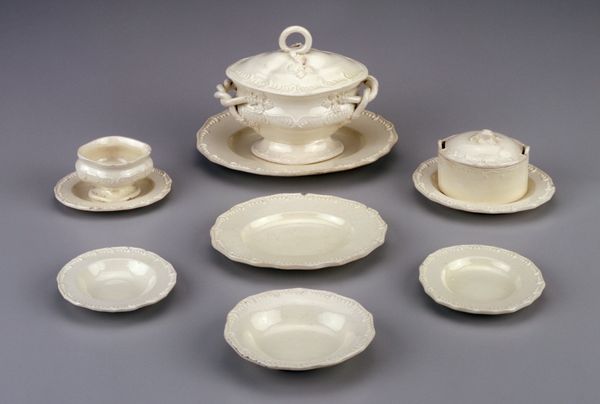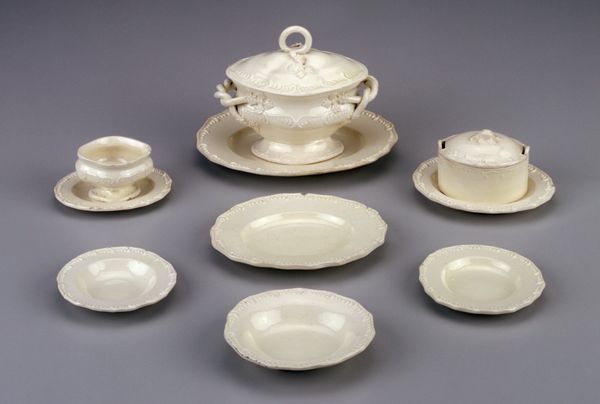
Dimensions: 1/2 x 3 1/2 x 3in. (1.3 x 8.9 x 7.6cm)
Copyright: Public Domain
Curator: Here we have “Meat Dish,” a ceramic and stoneware piece from around 1775, residing here at the Minneapolis Institute of Art. Editor: Immediately, I am struck by the utter pallor, this overwhelming blankness. It evokes a sense of enforced purity and rigid formality. Curator: Yes, the almost total lack of color certainly contributes to its impact. But observe how the artist uses form to compensate. Notice the elaborate Rococo detailing – the curves, the floral embellishments. The craftsmanship involved in creating these ornate features elevates functional dishware to the realm of decorative art. Editor: Decorative art, perhaps, but for whom? This isn't merely about aesthetics; consider the historical context. These delicate, labour-intensive ceramics would have graced the tables of the elite. While many people in that period struggled with daily survival, this excess represents both privilege and control, a powerful tool for signaling social status. Curator: You raise an important point. Yet, I would argue we can still appreciate the artistry, independent of its societal implications. See how the textures interact? The smooth, glazed surfaces play off the raised patterns, creating depth and visual interest. Look at the interplay of light and shadow! Editor: Indeed. But that play of light also casts stark shadows of the opulent lives that the upper classes indulged in. As well as the labour and resources such lifestyles relied upon in those periods. Who made the pieces? What were their lives like? This table setting implies their presence without acknowledging their role. Curator: Fair enough. Looking beyond the pure aesthetics encourages us to examine these pieces with an eye toward class dynamics in eighteenth century. I agree it's essential to remember art is never truly isolated, and this helps show how even everyday items such as tableware contain rich layers of meaning that reward critical inspection. Editor: Precisely, an object seemingly devoted only to superficial beauty opens up important historical and ethical discussions for us to explore in the modern day. By combining a sense of aesthetic qualities with questions about how the dishes operated in society, and in whose interest.
Comments
No comments
Be the first to comment and join the conversation on the ultimate creative platform.
